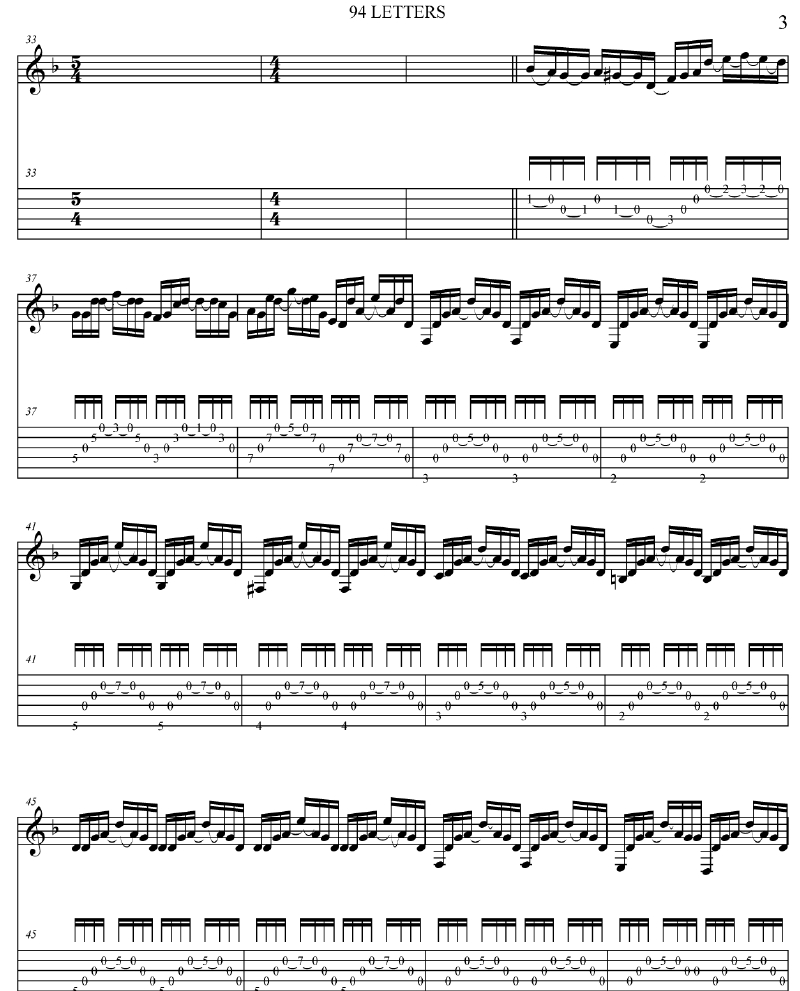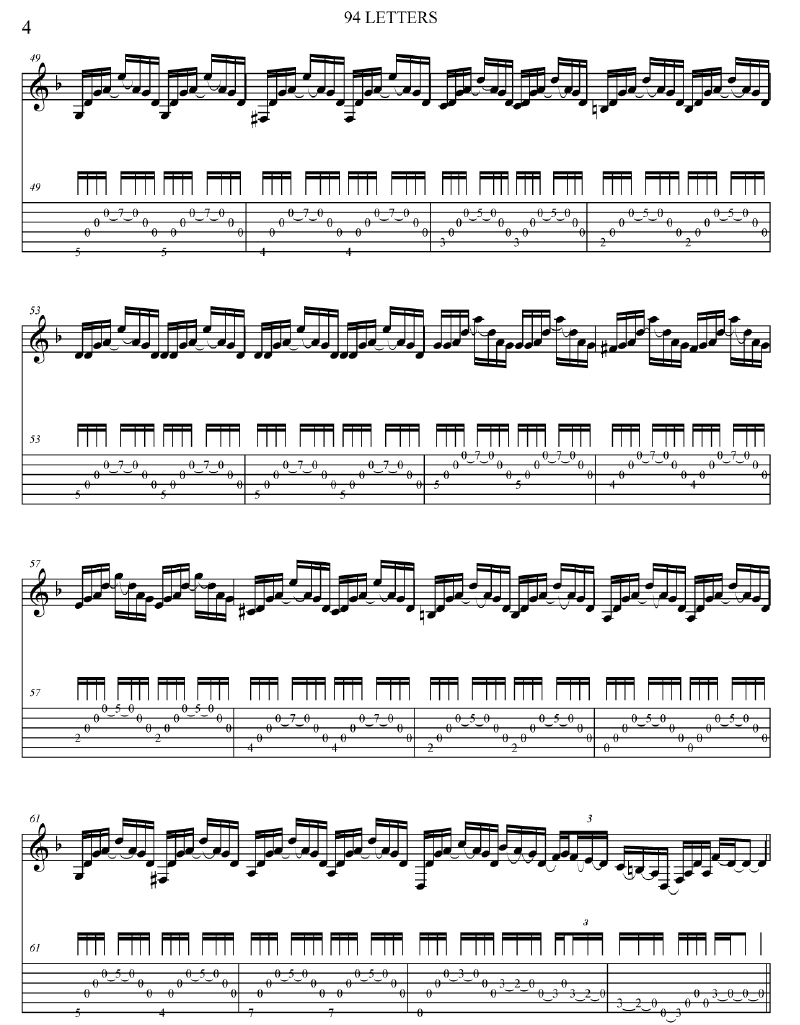In the song "94 Letters" (DADGAD tuning) from my first CD "Eat This It's Safe", there is a contrasting middle section (from 2:26-3:00, measures 36-64) which uses a very important right hand arpeggio pattern, p i m a m i. This arpeggio is generally played as a sextuplet pattern (six notes per beat). There are many excellent studies covering the use of this arpeggio. Two that come immediately to mind are Op.48 No.5 in E minor by Mauro Giuliani (1781-1829) and Adagio in E minor by Dionisio Aguado (1784-1849). I also have a new tune "Solumsistic" which uses this arpeggio exclusively. I'll let you know when it's out.
By adding a hammer on and a pull off to the top string of the arpeggio it I expanded it from six to eight notes long. I like the idea of taking something I've studied thoroughly and mutating it slightly to give it my own spin. The result is a sixteenth note feel instead of a triplet or sextuplet.
Here is an example of the original arpeggio:

Now, with the hammer on and pull off:

Employing hammer ons and pull offs makes the arpeggio more exciting.
Here is the middle section of "94 Letters" measures 36-64:


The last two measures offer up a tricky lick. It starts with our arpeggio and moves into the Aeolian mode (third and fourth beats of the next-to-the-last measure) and the minor pentatonic scale (second, third and fourth beats, last measure). I'm not trying to seem complex by writing about three different scales in two measures. It's just the way the fingering pans out. In fact this type of thing is very commonplace, particularly in the rock world. The Bb note on the third string implies Aeolian, and the B note on the fifth string implies Dorian. Both are minor scales.
I highly recommend Aaron Shearer's "Learning the Classic Guitar" volumes 1, 2 and 3 published by Mel Bay. They are an excellent resource for all guitarists, not just someone aspiring to the classic guitar. Volume 1 in particular does a wonderful job of explaining the five right hand arpeggio patterns. They have been instrumental (HA HA, no pun intended) in my development. Transcriptions and downloadable
video performances are available at my web site.
Any questions or comments can be directed to me at the above web address.
Good luck and practice hard.
Tom Yoder is a guitar instructor at Coastal Carolina University - the emminence grise behind countless guitar players in South Carolina, including Edwin McCain.
His CD "Eat This It's Safe" showcases his phenomenal compositional and fingerstyle talents. Yoder bears comparison with the likes of Hedges, Bensusan and Kottke.